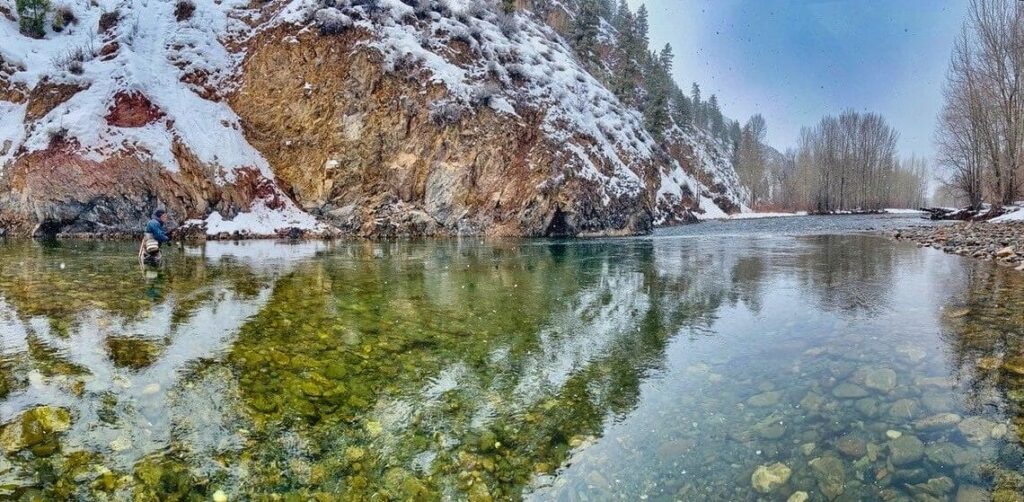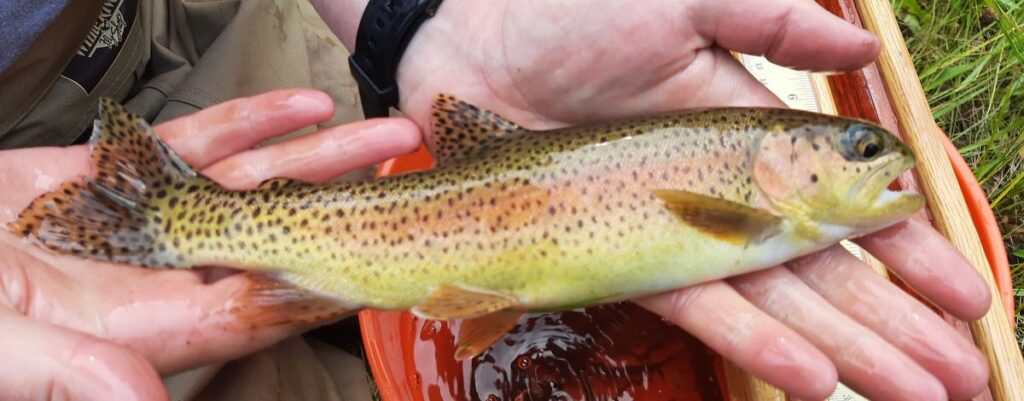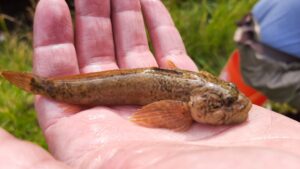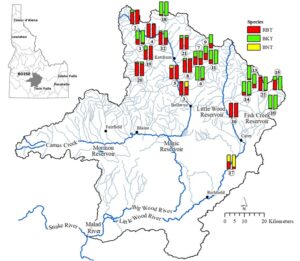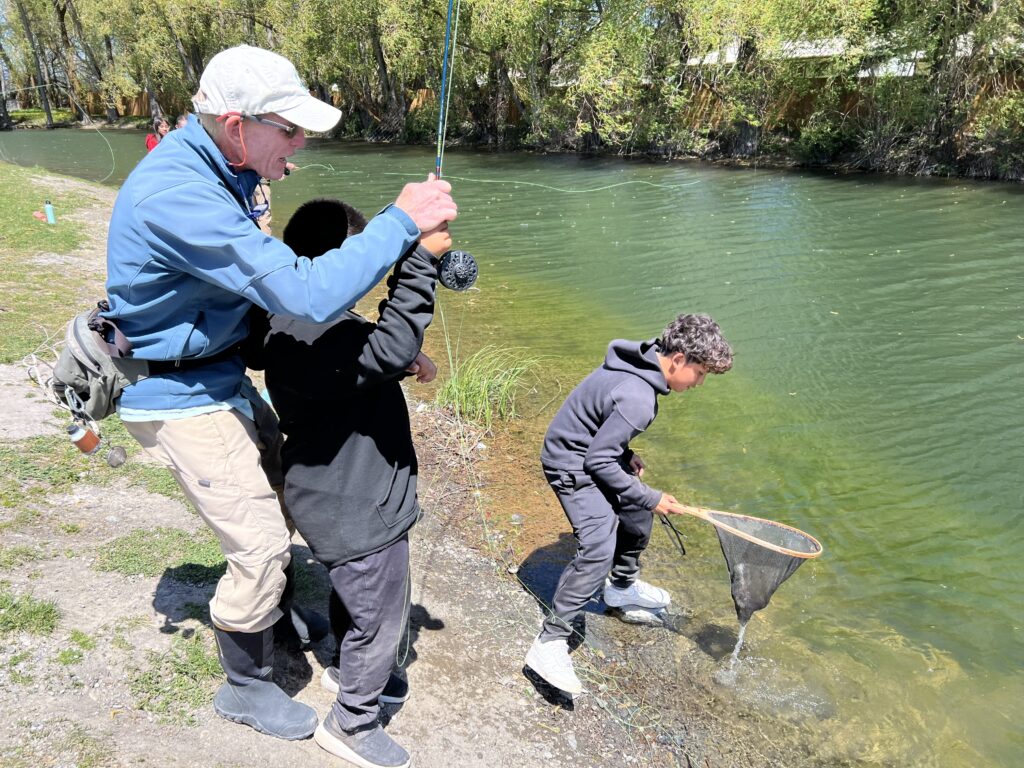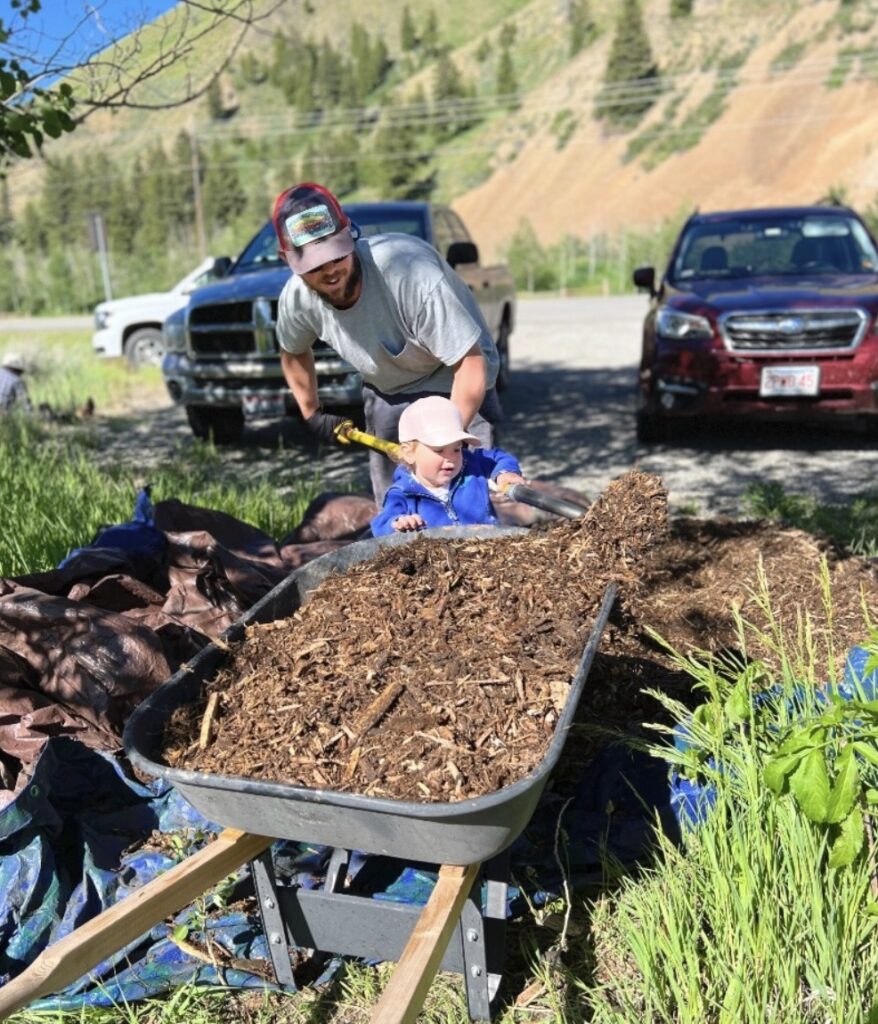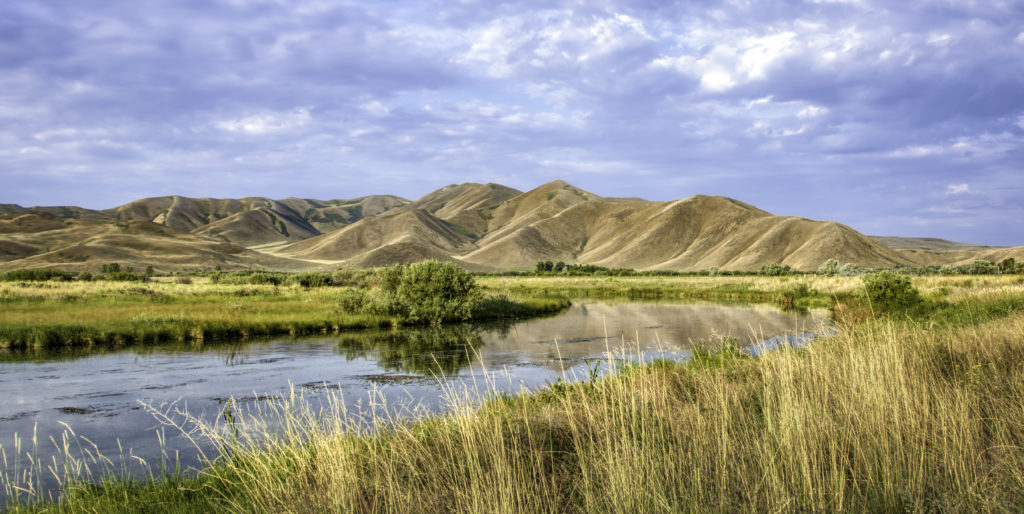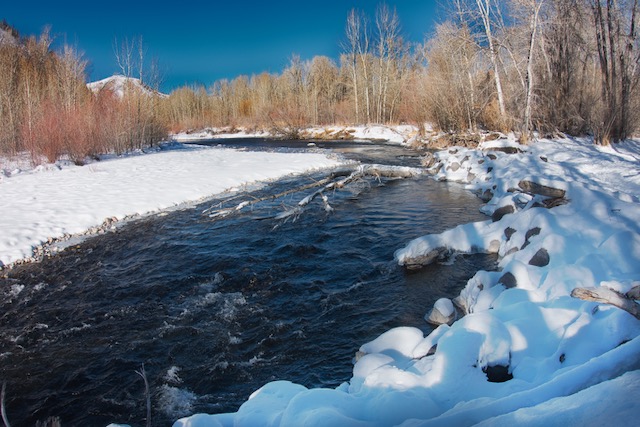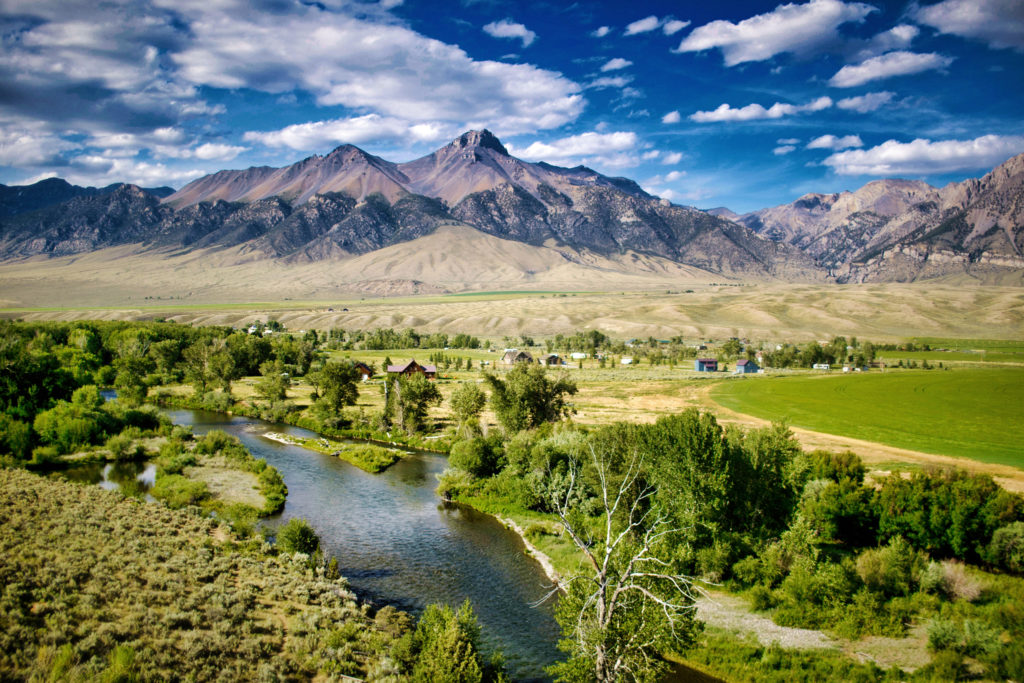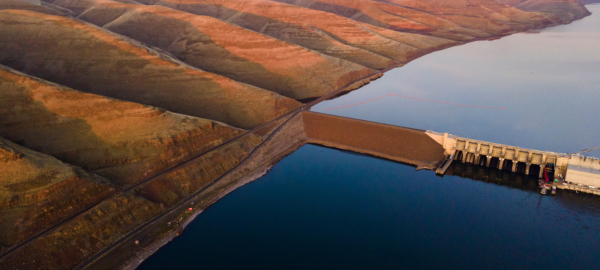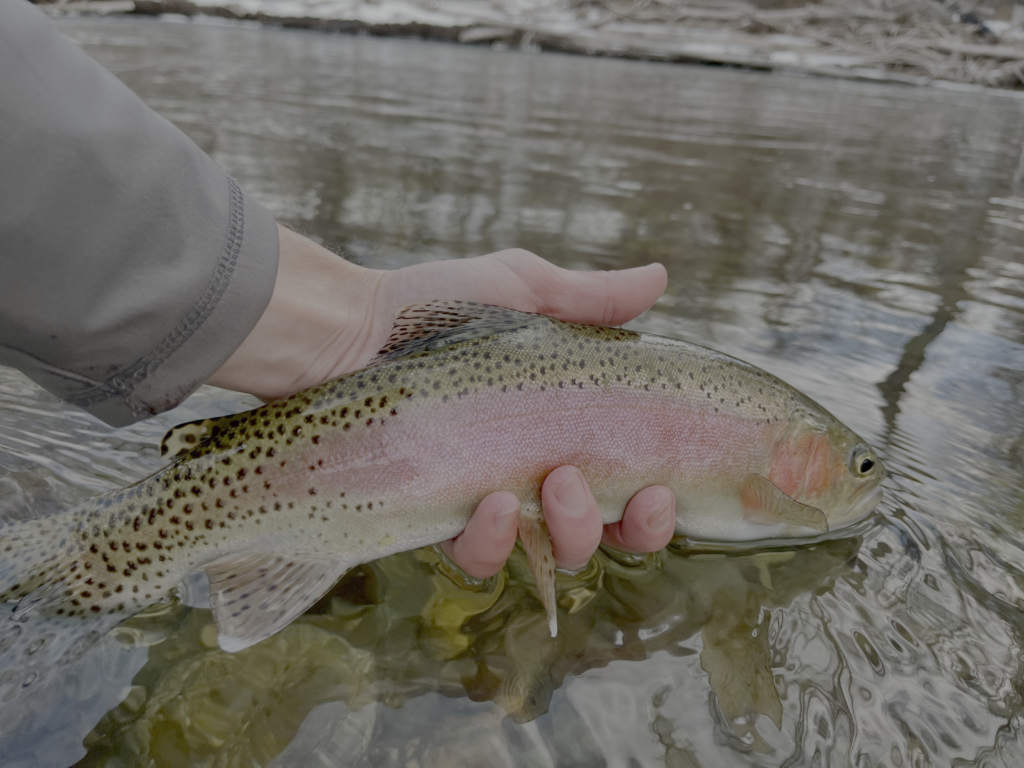
Hemingway TU Board member and staff for Silver Creek Outfitters Sam, takes us along for a January day on the Big Wood. Check it out for a firsthand look at why winter on the Wood might just be its finest hour.
Written by Sam Ernst
I am fortunate to live in a place where my first day of fishing in the new year can be on January 4th. The Big Wood in the winter might just be the Big Wood at her finest. January may not rank terribly high if one was to put it up against the others on a fish-y-ness scale, but I could make a case for this long, cold month.
Today was a textbook winter day on the Wood. No need to hurry up and get out of the house at zero dark thirty. I know the fish will cooperate when they warm up a bit. It’ll be 30 something here soon, which, after acclimating to winter in southern Idaho, may actually feel comfortable. I don’t have to think very hard to choose my access point for the day. I figure the obvious one will be vacant because, well, it’s January.
On my way there, I check in on the access just downstream of my ordinary spot choice. The plan is to acquire two spots for the price of one. Given the recent snow, it’s plowed in. Step one of the plan has come to fruition. Step two insists that no one else is parked where I’m headed. A quick rip up the highway and sure enough, the plan comes together. I just need to pull on my waders.
I’ve got a little walk down river ahead of me before any trout fishing takes place. A group of diving ducks come whizzing around the first bend in the river. A buddy recently pointed out that diving ducks fly like maniacs. Goldeneye maybe? Whatever the species, they were movin’ – up, down, left, right – all with whistling wings moving at barely sub-hummingbird speed. My focus returns to where my steps land, trying to avoid ending up on my rear end.
A few more bends and a few more bird musings and I’ve made it to the run I had in mind. I take another look at what flies I left rigged after the last time I fished. A size sixteen, some thing that looks vaguely Prince adjacent, and a twentyish midge. I give the knots a good tug and fiddle with my bobber, should be fine. I’ve been keeping an eye on the water, hoping a head would show itself in the tail-out. No such luck.
In the trout’s defense, I did not see any airborne, adult midges. The water is a little lower than I thought it would be, although not necessarily a bad thing. I finagle a few drifts through what I’m pretty sure are the right seams. No bobber down scenarios. My brain insists that I must have chosen the wrong twentyish midge. Bring the whole deal in. If they’re not eating the black midge, try the red one. Mess with the bobber again. A nominal number of drifts later and a healthy little rainbow confirms that red is on the menu.
My downstream nature walk put four or so good runs between myself and the truck. It’s not yet midday and I begin picking my way back upstream. Some runs fish better than others, but it seems that patience and a fly change can usually buy a fish or two. None of the fish are very big. None of the fish are very small. Just stout, bright, Big Wood rainbows.
I find myself fishing the Wood more in the winter than I do in the summer. Could be an occupational hazard, but if I’m honest, I think I just enjoy it more. January is quiet, still. I have to slow down to match the river’s pace right now. Yeah, there might not be a drake hatch or size 10 hoppers bouncing everywhere, but the trout are still in the water earning their keep. The menu is largely limited to appetizers, and a special consideration for stealth is usually rewarded. A guy could romanticize the fishing here twelve months a year, and the same guy could be accused of just really liking to fish. Every month has its moments of perfection on the water. January too has plenty of its own to share.

